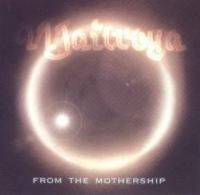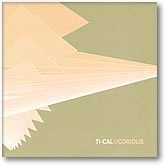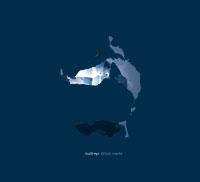|
Simon, about 4 years ago you started the Council of Nine-label. What made you make that step, as things were already quite difficult in EM-land? What’s the goal of the label?
The Council of Nine label was primarily set up as an outlet for my own music, and although we release work from other artists, it still is. We do it firstly because we love the music and because we want it to be heard. Because of this, we have very specific ideas about the quality of our work. The music we choose to promote, both our own releases and those from other labels, must be something that we believe in, and enjoy.
Over the last 4 years the label has grown quite organically and is really becoming established; we are now recognised for our consistency in quality and style. It’s a pleasure to have so many people getting in touch to tell us how much they are enjoying our releases. It seems that people really respond to work that is uncompromising and carefully put together. We have certainly seen that the electronic music scene is a vibrant one and we are constantly gaining new listeners and visitors to our website, from all over the World.
The first release of the label was Maitreya’s “From the Mothership”. The who & what of Maitreya was carefully kept in the dark and only revealed recently. Why?
I find this quite funny, because my identity was never intentionally concealed, just never disclosed in the albums artwork. I find stepping out of the role of the artist, and being the label manager means that I can better promote the music. But I have been pleasantly surprised at how people have responded to finding out that the artist is me – it seems to give me even more credibility, because I not only write the music but actively work to get it heard as well.
 Tell us some more about the second and third of Council of Nine. Who are these musicians, how did they come your way, can we expect more music from them in the future? Tell us some more about the second and third of Council of Nine. Who are these musicians, how did they come your way, can we expect more music from them in the future?
Both the second and third releases on the label were debuts by brand new artists who approached us directly: ‘Hav’ from Christian Knudsen, a Norwegian producer, and ‘Coriolis’ from London-based Tarl Broad-Ashman (Ti-Cal). There is nothing further planned from Christian at the moment, but Tarl has just started back in the studio on the second Ti-Cal album.
We’re also excited about a number of special edition releases we have scheduled for 2004. Each release will be short run and in strictly limited quantity; the first is planned for release in February and is taken from a project called ’12 Hours’ that I was commissioned to do for a new Arts Festival in the South-West of England. There is also a visual element to the original performance which we will be making available through our website nearer the time.

Fall of 2003 saw the second release of Maitreya, “Telluric Waves”, which also revealed that you were the actual musician behind it. Please share some of your thought & ideas with us about the music of Maitreya in general and tell us some more about the music on the new cd? In what way do you think is it different from the debut-cd?
Firstly, “Telluric Waves” is a whole step on from the first release, it is a much more mature and considered sound. Where “From the Mothership” is all out space music, “Telluric Waves” has much more subtlety and depth. I quite often draw inspiration from places I have been, it’s like I hear a soundtrack for the places I visit. On the new album, “Lumen” is a really good example of this; my inspiration for this track came from a time when I walked over the cliffs with my family on a cold and blustery day. The sky was a moody grey and spray from the sea was coming right up over the cliff side. One part of this particular coastal path descends down into a wooded area which shields you from the sea. From here you can no longer hear the howling wind or rough sea, being cocooned by the trees. Finally you emerge onto an expansive pebble beach exposed once more to the elements. I wrote “lumen” completely that same day – I was really inspired to create a track that captured the feeling of the transitions through each of the different environments, and “lumen” was the result. It is one of my favourites from the new album. I actually asked a friend of mine if she could tell what the track was about just from listening to it – quite surprisingly she said “woods by the sea”! Maitreya is very different from any of the other music or bands that I produce. It is the time when I can really explore the sounds that I am creating in depth, and really push my ideas to the limits. I don’t hang around in the music I write – it’s the best way to stimulate your interest and keep the music fresh!
Is Maitreya just a studio-project, or do you feel this concept might also work live?
Although Maitreya is tried and tested to work very well in the studio context I can definitely see the potential with live work. I have played live before on several instruments with a number of bands but never before as Maitreya. I have actually been invited over to Holland to play at one the E-Live concerts in October, and this is a really exciting opportunity. Kama Glover (our visual artist) and I are putting together a performance that will also involve some really interesting visual projections, and I am working to produce a musical performance where much of the sound will be ‘live’ and unique to the concert.
Simon, what’s you opinion on nowadays ambient-music? What developments do see, as a musician and/or label manager?
Something I find quite interesting are the differences between ambient music from different countries. In my experience American ambient tends to take a very distinctive long form approach, lots of drone! Ambient music from Scandinavia has that distinctive cold arctic sound. I find it both amusing and a little annoying that the average person’s interpretation of ambient here in the UK leans more towards chill-out and down tempo, with the obvious exception of Council of Nine!
Ambient music has the potential to use the advances in formats, like dvd and mp3 to great effect, because it has fewer boundaries than most other music. It is not restricted by length or application. I think that we will see more releases which depart from the usual 74 – 80 min cd format and start to explore the use of visuals and even longer formats. This is a very exciting prospect for both the creator and listener.
Do you have any plans to co-operate with another musician sometime?
I have already taken part in some collaborative projects with a number of visual artists to create different installations and video productions, but it would take a new way of working to collaborate with other musicians. My solo work as Maitreya is about creation and control of sound and I have the luxury of being able to take the time to make every sound exactly as I want it to be. I like to have the studio to myself! But having said that there are a couple of other interesting artists who I am talking with about this kind of project. I know it means having to adapt the way that I work, but it should result in something quite interesting.
Simon, thanks a lot for this interview !
Website: www.simonlomax.com |


 Tell us some more about the second and third of Council of Nine. Who are these musicians, how did they come your way, can we expect more music from them in the future?
Tell us some more about the second and third of Council of Nine. Who are these musicians, how did they come your way, can we expect more music from them in the future?